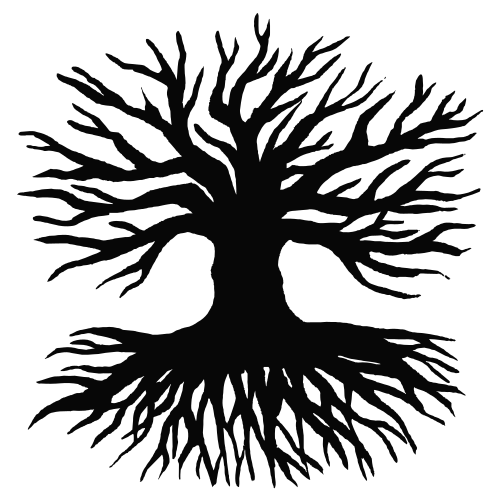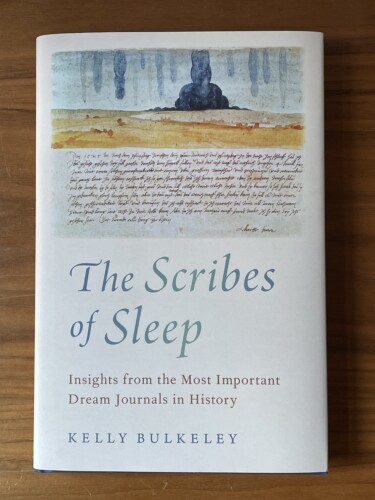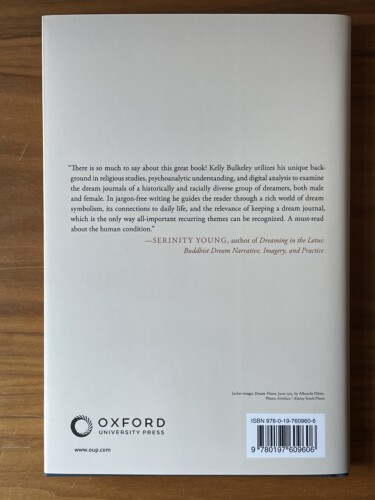 A new article about dreaming and sports, co-authored by me and Michael Schredl, has just been accepted for publication by the journal Dreaming. We do not yet know in which issue of the journal it will appear, but we are very excited to share our findings at last! We analyzed the survey responses of @4500 American adults who answered questions in 2021 about their sleep, dreams, and interest/participation in sports. The results of our analysis suggest a number of practical implications for athletic training, cultural analysis, and dream research. Michael has done several previous studies on this topic, and I was glad for his collaboration. My curiosity about sports and dreams derives from ideas I have been developing about dreaming as form of play. This study offered an opportunity to see how those theoretical ideas relate to the empirical data of the survey.
A new article about dreaming and sports, co-authored by me and Michael Schredl, has just been accepted for publication by the journal Dreaming. We do not yet know in which issue of the journal it will appear, but we are very excited to share our findings at last! We analyzed the survey responses of @4500 American adults who answered questions in 2021 about their sleep, dreams, and interest/participation in sports. The results of our analysis suggest a number of practical implications for athletic training, cultural analysis, and dream research. Michael has done several previous studies on this topic, and I was glad for his collaboration. My curiosity about sports and dreams derives from ideas I have been developing about dreaming as form of play. This study offered an opportunity to see how those theoretical ideas relate to the empirical data of the survey.
Immoral Behaviors in Dreaming and What They Mean
 Recently wrote a post for Psychology Today about “Taboo Dreams,” meaning dreams that involve activities or behavior that violate the moral standards of the dreamer’s community in waking life. Over the years, several people have asked me questions about these kinds of dreams, and I get the sense that many more people would like to ask but are embarrassed to do so.
Recently wrote a post for Psychology Today about “Taboo Dreams,” meaning dreams that involve activities or behavior that violate the moral standards of the dreamer’s community in waking life. Over the years, several people have asked me questions about these kinds of dreams, and I get the sense that many more people would like to ask but are embarrassed to do so.
A key takeaway from the post: Just because you behave a certain way in a dream does not mean that is who you “really are.” Likewise, just because you dream of doing something, it does not automatically mean you should enact it in waking life. If you take even a few moments to reflect on your dream, you will almost surely find the meanings are more complex than that. In many of these dreams the “taboo” behavior is a metaphor that relates to something else in the dreamer’s waking life. If you can get past the literal images of shocking immorality and explore the metaphors with an open mind, new insights into the depths of your own psyche will become possible.
Keeping a Dream Journal: Fly Like an Eagle
 What’s it like to keep a long-term dream journal? These days I’m doing everything I can to help in developing and promoting the new app Elsewhere, an excellent resource for dream journaling. Also, my new book The Scribes of Sleep is about the history of dream journals. Thus, I’m thinking a lot about how to describe the value of keeping a dream journal to people who might be unfamiliar with the practice. How can you begin to understand the wild wonder and serendipitous magic of dream journaling if you have never tried it?
What’s it like to keep a long-term dream journal? These days I’m doing everything I can to help in developing and promoting the new app Elsewhere, an excellent resource for dream journaling. Also, my new book The Scribes of Sleep is about the history of dream journals. Thus, I’m thinking a lot about how to describe the value of keeping a dream journal to people who might be unfamiliar with the practice. How can you begin to understand the wild wonder and serendipitous magic of dream journaling if you have never tried it?
As I learned primarily from George Lakoff and Mark Johnson in their 1980 book Metaphors We Live By, the power of metaphors is their capacity to use what we know to help us understand what we do not know. Here, I’m thinking that keeping a dream journal is metaphorically like being a Bald Eagle. (It could be any high-flying bird, but this is the one I saw earlier this afternoon.) We know several things about eagles that can also be accurately said of dream journaling.
When you track your dreams over time in a journal, you are able to rise above the occurrence of single dreams to see the flow of your dreaming in its entirety. From this altitude the whole of your oneiric terrain becomes visible. You can recognize large-scale patterns, shapes, and features that are simply impossible to perceive from the ground level.
As a dream-journaling eagle, you can easily move back and forth across the verdant territory of your dreaming self, soaring in whatever direction you please, circling over some places, swooping down for a closer look in others. Your perception in incredibly sharp: you notice subtle movements, hidden connections, and curious forms of life. Your consciousness expands to encompass everything you can see–the sky, the land, and the farthest horizons.
Beyond the specific insights that are possible from the eagle’s view, the summum bonum of dreaming journaling is the emergence of a more dynamic spiritual awareness and presence in the world. Perched on the top branch of the tallest tree in the forest, you can gaze over the bounteous vitality of your own personal realm of dreaming and reflect on the contours of your life from a uniquely wide-ranging perspective.
And who knows, maybe you’ll meet someone else who’s perched up there…

The Elsewhere Dream Journaling App
 Elsewhere is a new dream journaling app, created by an international team of people who are avid dream journal-keepers themselves. Available for both iOS and Android systems, it’s a safe, private space to record your dreams, track them over time, and learn about their unfolding patterns of meaning. Elsewhere offers a variety of analytic tools and fun interactive features, with even better features soon to come.
Elsewhere is a new dream journaling app, created by an international team of people who are avid dream journal-keepers themselves. Available for both iOS and Android systems, it’s a safe, private space to record your dreams, track them over time, and learn about their unfolding patterns of meaning. Elsewhere offers a variety of analytic tools and fun interactive features, with even better features soon to come.
There are many dream journaling apps in the world today, which is a positive sign of interest in this kind of widely-accessible oneiric resource. I believe Elsewhere stands out because of its singular focus on exploring the deepest, most dynamic dimensions of dreaming. The app can already do amazing things, providing users with:
- The ability to record dreams by writing or speaking into the app
- The ability to upload dream-related images (e.g., sketches, diagrams, photos)
- Automatic tagging of each dream, with running statistics of what contents appear most often
- AI-generated artistic images for each dream
- AI-generated analyses of patterns relating to symbols, characters, and settings
- Access to a set of more than 100 specially designed images of classic dream symbols
- Symbolic interpretations from David Fontana’s 1994 book The Secret Language of Dreams
- Multiple languages, with full functionality in English, German, Japanese, Indonesian, Polish, Ukrainian, Russian, Spanish, and French
Soon Elsewhere will be available in a website version, for those like me who prefer typing at a desktop for dream journaling. The website version will look and function essentially the same as the app, making it easy to move from one device to another and back again.
Most exciting is the imminent arrival of the Groups function. This will allow Elsewhere users to create private online groups for sharing selected dreams together, with all the tools and resources of the app at their disposal. The first version of this function will be quite basic, but we’re hoping to expand and improve it over time. If you’re interested in being an early tester of the Groups function—especially if you already have experience with dream-sharing groups—please sign up for Elsewhere and let us know what you think. You can find it here.

The Scribes of Sleep – A New Book about the History of Dream Journals
 My latest book, The Scribes of Sleep, has just been published by Oxford University Press. It’s a work dedicated to people who keep dream journals, as a new resource for learning more about the fascinating and largely unknown history of dream journal practices. The book is also intended as an argument in favor of dream journals as a valuable source of empirical data for scientific research into the nature and functions of dreaming.
My latest book, The Scribes of Sleep, has just been published by Oxford University Press. It’s a work dedicated to people who keep dream journals, as a new resource for learning more about the fascinating and largely unknown history of dream journal practices. The book is also intended as an argument in favor of dream journals as a valuable source of empirical data for scientific research into the nature and functions of dreaming.
If you are passionate about your dreams and tracking them over time, The Scribes of Sleep is written specifically for you.
Seven remarkable historical dreamers are the core of the book:
- Aelius Aristides (117-181), a Roman speaker and writer whose health crisis in his 20’s brought him to seek help at the temples of the healing god Asclepius. Aristides began recording his dreams in response to a direct command from the god.
- Myoe Shonin (1173-1232), an ascetic Japanese monk who advocated for reforms in the Kegon school of Buddhism. He kept a journal of his dreams, visions, and meditation experiences for forty years.
- Lucrecia de Leon (1568-?), an illiterate young woman who grew up in Madrid, Spain during the imperial reign of Philip II. Catholic priests recorded a series of her dreams over a period of three years, dreams that accurately foresaw the defeat of the Spanish Armada in 1588.
- Emanuel Swedenborg (1688-1772), a Swedish scientist and philosopher who recorded his dreams over several years, leading to a spiritual awakening and the founding of a new church of mystical Christianity.
- Benjamin Banneker (1731-1806), a free African-American scientist, inventor, surveyor, and author of impressively accurate almanacs. One of the most brilliant minds of his time, Banneker kept a regular dream journal through his adult life, only fragments of which still exist.
- Anna Kingsford (1846-1888), a crusading English doctor, anti-vivisectionist, theosophist, and women’s rights advocate. She wrote a journal of her dreams from her early 20’s to her death at 41.
- Wolfgang Pauli (1900-1958), a Swiss theoretical physicist whose original work on quantum theory won him the Nobel Prize in Physics in 1945. He was a therapy client of C.G. Jung’s, and for many years he kept a dream journal and shared its contents with Jung for analysis and interpretation.
To help in exploring the dream journals of these seven amazing figures, I bring them into dialogue with three broad methods of dream study: digital data science, depth psychology, and religious studies. Drawing together the findings from all these methods, I advocate for the importance of keeping a dream journal as both a unique practice of spiritual self-discovery and a vital source of scientific evidence.

Dream Journaling as a Contemplative Practice
 Most people who keep a dream journal are initially motivated by simple curiosity and the hope they will gain insights into their waking lives. But as they continue with the journaling and track the emerging patterns of their dreams over time, they often find the process becomes something more than that, something that develops a life of its own and opens into a new relationship with the unconscious realms of their minds.
Most people who keep a dream journal are initially motivated by simple curiosity and the hope they will gain insights into their waking lives. But as they continue with the journaling and track the emerging patterns of their dreams over time, they often find the process becomes something more than that, something that develops a life of its own and opens into a new relationship with the unconscious realms of their minds.
Recently I was talking with Ryan Hurd, who manages the site dreamstudies.org, about the experience of keeping a dream journal, and he mentioned the idea that dream journaling can be thought of as a kind of contemplative practice, similar in many ways to meditation and prayer. This idea immediately resonated with my own feelings about the impact of dream journaling, and as we talked further it seemed worthwhile to share this line of thinking with others who might find it helpful.
At first sight, of course, this might seem like an implausible comparison. Dream journaling is not addressed to a deity like prayer, nor does it involve emptying the mind of all contents like some forms of meditation. There are no formal traditions or established schools of dream journaling, comparable to the ancient teachings about prayer in Christianity or meditation in Buddhism.
All of this is true, and yet the similarities remain striking. Consider the following features that characterize the long-term practice of dream journaling:
- It cultivates a capacity for sustained, focused self-reflection.
- It cultivates an ability to suspend your ego and listen to your inner voice of intuition, your true self.
- It brings forth a more honest awareness of your greatest challenges, conflicts, and vulnerabilities.
- It increases your sensitivity to the symbolic potentials of waking experience.
- It will surprise you with sudden discoveries and realizations.
- It is enjoyable and mentally transformative no matter what actual insights may come.
These core features of the practice of dream-journaling also characterize many forms of meditation and prayer. This was pragmatic gist of my conversation with Ryan. In our lives, at least, keeping a dream journal plays a role very similar to the one that meditation and prayer seems to play in other people’s lives. As much as we value the insights we learn from particular dreams, we are most drawn to dream journaling as a practice, as an ongoing dialogue with the transcendent powers of the psyche.
Setting aside time each day to record your dreams, reflect on their images and feelings, sort and categorize their contents, analyze them for their broad patterns and odd singularities—these activities generate a contemplative flow in themselves, a flow that when experienced on a regular basis becomes a powerful resource for creativity in all aspects of life. Although much less studied than meditation and prayer, keeping a dream journal is a kindred practice of deep, long-term psychological and spiritual growth.
(This post was first published on the website of Psychology Today, March 2, 2023.)
